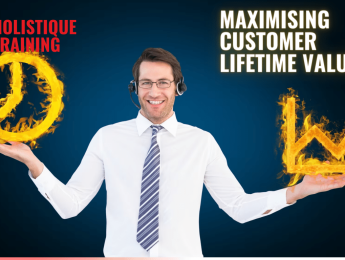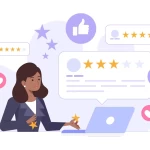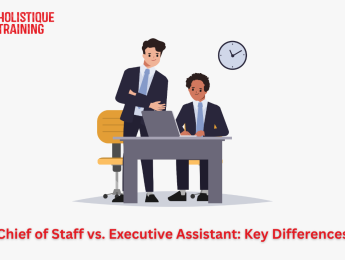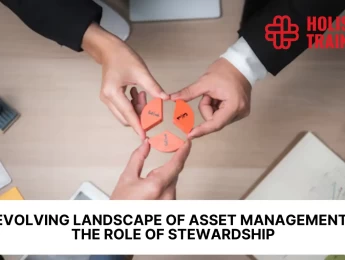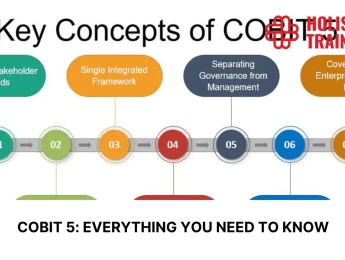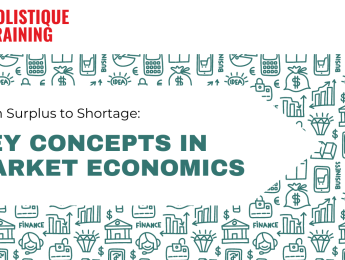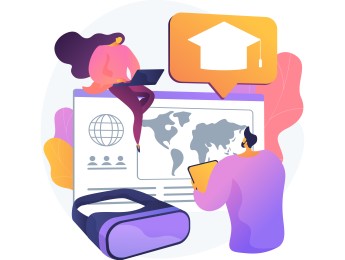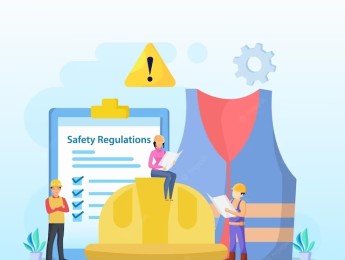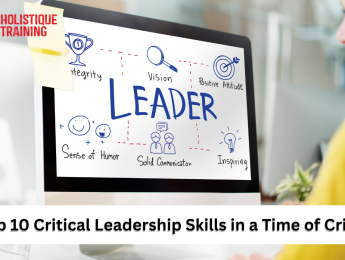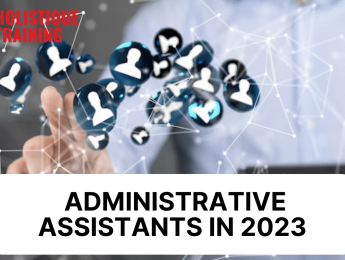- Table of Contents
- What Is Customer Lifetime Value?
- Customer Lifetime Value and the Customer's Journey
- How to Calculate Customer Lifetime Value
- Average Purchase Value
- Purchase Frequency
- Average Customer Lifespan
- How to Increase Customer Lifetime Value
- 1- Deliver Exceptional Customer Experience
- 2- Foster Customer Loyalty Programmes
- 3- Personalise Marketing Efforts
- 4- Proactive Customer Service
- 5- Upselling and Cross-Selling
- 6- Focus on Customer Retention
- The Role of Technology in CLV Optimisation
- Advanced Analytics for Deeper Customer Insights
- Customer Relationship Management (CRM) Software for Personalisation
- Artificial Intelligence (AI) for Enhanced Recommendations
- Chatbots for Instant Assistance
- User-Friendly Interfaces for Enhanced Experience
- Data Security Measures for Trust and Compliance
- Challenges in Maximising Customer Lifetime Value
- 1. Data Quality and Integration
- 2. Changing Customer Behaviour
- 3. Balancing Short-Term and Long-Term Goals
- 4. Competition and Market Saturation
- 5. Technology Implementation Costs
- 6. Measuring Customer Satisfaction and Loyalty
- 7. Adapting to Regulatory Changes
- Conclusion
Introduction
In the dynamic world of business, customer relationships play a pivotal role in shaping long-term success. It's not just about acquiring new customers; it's about nurturing existing ones and maximising their value over time. This is where the concept of Customer Lifetime Value (CLV) comes into play. In this blog post, we will delve into the essence of CLV, its connection with the customer's journey, how to calculate it, and most importantly, how to increase it.
What Is Customer Lifetime Value?
Customer Lifetime Value (CLV) is a strategic metric that quantifies the total worth of a customer to a business over their entire relationship. Unlike short-term profitability measures, CLV focuses on the long-term value that customers bring by considering their repeated purchases, loyalty, and the potential for upselling or cross-selling. By understanding CLV, businesses can make informed decisions about resource allocation, marketing strategies, and customer retention efforts.
Customer Lifetime Value and the Customer's Journey
CLV is closely intertwined with the customer's journey. It starts from the initial stage of awareness, where customers become aware of a product or service. From there, they move to consideration, evaluating different options and making a purchase decision. Subsequently, customers enter the loyalty phase, where their satisfaction and engagement determine their likelihood of repeat purchases. Finally, some customers become advocates, sharing positive experiences and driving referrals.
Journey Stage | Description |
Awareness | Customers become aware of a product or service. |
Consideration | Evaluation of different options and making a purchase decision. |
Loyalty | Customer satisfaction and engagement determine repeat purchases. |
Advocacy | Some customers become advocates, sharing positive experiences and driving referrals. |
Table 1: Customer journey overview
Throughout this journey, CLV fluctuates, influenced by factors such as customer satisfaction, brand loyalty, customer service, and personalised experiences. Understanding the different touchpoints and stages in the customer's journey allows businesses to identify opportunities to enhance CLV, resulting in stronger customer relationships and increased profitability.
How to Calculate Customer Lifetime Value
Calculating CLV requires a comprehensive approach, taking into account several variables. While there are various methods to calculate CLV, let's focus on a simplified formula:
CLV = (Average Purchase Value x Purchase Frequency) x Average Customer Lifespan
Average Purchase Value
Determine the average value of each customer transaction. This can be calculated by dividing the total revenue generated by the number of purchases made by customers within a specific period.
Purchase Frequency
Calculate how often customers make purchases within a given timeframe. Divide the total number of purchases by the number of unique customers.
Average Customer Lifespan
Estimate the average duration of a customer's relationship with your business. This can be calculated by determining the average time between a customer's first purchase and their last purchase or churn.
Let's consider an e-commerce business that sells clothing and accessories. Over the past year, they had 10,000 unique customers who made a total of 25,000 purchases. The total revenue generated during this period was $500,000. To calculate CLV, we'll need to determine the average purchase value, purchase frequency, and average customer lifespan.
- Average Purchase Value: Total Revenue / Total Number of Purchases $500,000 / 25,000 = $20
The average purchase value for this e-commerce business is $20.
- Purchase Frequency: Total Number of Purchases / Number of Unique Customers 25,000 / 10,000 = 2.5
On average, each customer made 2.5 purchases within the given timeframe.
- Average Customer Lifespan: Let's assume the average customer relationship duration for this business is 2 years.
Now, we can calculate CLV using the formula:
CLV = (Average Purchase Value x Purchase Frequency) x Average Customer Lifespan CLV = ($20 x 2.5) x 2 CLV = $50 x 2 CLV = $100
According to this calculation, the average Customer Lifetime Value for this e-commerce business is $100.
By knowing the CLV, the business can evaluate the potential value of their customers and make data-driven decisions to enhance customer relationships, optimise marketing strategies, and drive growth.
How to Increase Customer Lifetime Value
Now that we understand the significance of CLV, let's explore strategies to boost it:
1- Deliver Exceptional Customer Experience
Creating a seamless and personalised customer experience is foundational to increasing CLV. Every touchpoint in the customer journey should be an opportunity to engage, address pain points, and exceed expectations. By building strong emotional connections, businesses foster customer loyalty. Satisfied customers are not only more likely to make repeat purchases but also tend to spend more over time. This strategy extends beyond the product or service itself, encompassing the entire customer interaction from browsing the website to post-purchase support.
Additionally, leveraging technology can enhance the customer experience. Implementing chatbots for instant assistance, personalised recommendations based on previous interactions, and easy-to-navigate interfaces contribute to an overall positive experience. If you want to learn more about how to do that, make sure to check out our course, ‘Improving Your Customers’ Experience’.
2- Foster Customer Loyalty Programmes
Loyalty programmes are effective tools for incentivising repeat purchases and increasing CLV. By offering exclusive rewards, discounts, or tiered membership benefits, businesses not only encourage customers to return but also create opportunities for upselling and cross-selling. The key is to make the loyalty programme valuable and relevant to the customer.
For example, Sephora's Beauty Insider programme allows customers to earn points with each purchase, which can be redeemed for exclusive products or discounts. This not only cultivates loyalty but also motivates customers to explore additional products within the brand.
3- Personalise Marketing Efforts
In the era of big data, leveraging customer data to personalise marketing campaigns is a powerful strategy. Tailoring recommendations, promotions, and communications based on individual preferences and behaviours makes customers feel valued and understood. This personalisation can significantly impact purchasing decisions and overall satisfaction.
Businesses can utilise customer segmentation based on demographics, purchase history, or browsing behaviour to deliver targeted and relevant content. Automated email campaigns triggered by specific customer actions, such as abandoned carts or previous purchases, contribute to a more personalised marketing approach.
4- Proactive Customer Service
Exceptional customer service is a cornerstone of CLV growth. Beyond resolving issues promptly, businesses should aim to exceed customer expectations. Proactive communication, quick response times, and a customer-centric approach contribute to overall satisfaction.
Implementing customer feedback mechanisms, such as surveys or reviews, allows businesses to continuously improve their services based on customer input. Positive interactions with customer service not only resolve immediate concerns but also contribute to a positive brand image, fostering long-term loyalty.
5- Upselling and Cross-Selling
Identifying opportunities to offer complementary products or upgrades based on customers' past purchases is a strategic method to increase CLV. By suggesting relevant add-ons or upgrades, businesses not only enhance the customer's overall experience but also increase the average purchase value.
Effective upselling and cross-selling require a deep understanding of customer preferences and needs. This can be achieved through data analysis and personalised recommendations. For instance, suggesting a matching accessory for a purchased item or offering a discounted bundle encourages customers to explore additional products.
6- Focus on Customer Retention
While acquiring new customers is essential, allocating resources to retain existing ones is equally—if not more—important for maximising CLV. Providing ongoing value, maintaining regular communication, and offering personalised incentives are key components of customer retention.
Businesses can implement loyalty-building strategies such as exclusive previews, early access to sales, or personalised discounts for long-term customers. According to Billsby, enhancing customer retention by 5% leads to a substantial 25% boost in earnings, highlighting the financial significance of retaining existing customers.
In summary, by strategically implementing these customer-centric approaches, businesses can not only increase CLV but also build sustainable, long-lasting relationships with their customer base, paving the way for continued growth and success.
The Role of Technology in CLV Optimisation
In the digital age, where data is abundant and customer interactions are increasingly occurring online, technology plays a pivotal role in optimising Customer Lifetime Value (CLV). Businesses that leverage advanced technological tools can gain deeper insights into customer behaviour, personalise interactions, and implement strategies that enhance the overall customer experience. Let’s delve into the crucial role technology plays in CLV optimisation:
Advanced Analytics for Deeper Customer Insights
Implementing advanced analytics tools is fundamental to understanding customer behaviour and preferences. Through data analysis, businesses can identify patterns, trends, and correlations in customer interactions. This not only allows for a retrospective understanding of customer actions but also enables predictive analytics to anticipate future behaviour.
Advanced analytics tools can analyse vast amounts of data, including purchase history, website interactions, and social media engagement. This information helps businesses segment their customer base effectively, enabling targeted marketing efforts and personalised communication.
Customer Relationship Management (CRM) Software for Personalisation
Customer Relationship Management (CRM) software is a key enabler for businesses seeking to optimise CLV. CRM systems consolidate customer data into a central hub, providing a 360-degree view of each customer. This centralised information empowers businesses to deliver personalised experiences at every touchpoint in the customer journey.
With CRM, businesses can track customer interactions, preferences, and past purchases. This knowledge allows for tailored marketing campaigns, personalised recommendations, and targeted communication. By anticipating customer needs and preferences, businesses can increase customer satisfaction, loyalty, and, consequently, CLV.
Artificial Intelligence (AI) for Enhanced Recommendations
The integration of Artificial Intelligence (AI) takes personalisation to the next level. AI algorithms analyse vast datasets to identify subtle patterns and correlations that may not be immediately apparent. This enables businesses to make highly accurate predictions about customer preferences and behaviour.
One of the most visible applications of AI in CLV optimisation is in recommendation engines. By analysing a customer's past purchases and interactions, AI algorithms can suggest products or services that align with their preferences. This not only enhances the customer's shopping experience but also increases the likelihood of additional purchases, contributing to CLV growth.
Chatbots for Instant Assistance
Providing instant and efficient customer service is a crucial aspect of CLV optimisation. Chatbots, powered by AI, offer businesses the ability to provide real-time assistance to customers. These automated systems can answer queries, provide product information, and even assist in the purchase process.
Chatbots contribute to a seamless customer experience by ensuring that customers receive immediate responses to their inquiries. By addressing customer needs promptly, businesses can enhance customer satisfaction, leading to increased loyalty and a positive impact on CLV.
User-Friendly Interfaces for Enhanced Experience
The optimisation of CLV is not solely about data analysis and algorithms; it also involves creating user-friendly interfaces that enhance the overall customer experience. A website or mobile app that is easy to navigate, visually appealing, and responsive contributes significantly to customer satisfaction.
Technology facilitates the design and implementation of interfaces that prioritise user experience. Whether it's a straightforward checkout process, personalised user dashboards, or intuitive navigation, a user-friendly interface ensures that customers have a positive interaction with the brand, fostering long-term relationships and increasing CLV.
Data Security Measures for Trust and Compliance
In the realm of CLV optimisation, trust is a vital component. Customers are more likely to engage and make repeat purchases when they trust that their data is handled securely. Technology plays a crucial role in implementing robust data security measures, ensuring compliance with privacy regulations and safeguarding customer information.
Implementing encryption, secure payment gateways, and regular security audits are essential in building and maintaining customer trust. Businesses that prioritise data security not only protect their customers but also position themselves as reliable and trustworthy, contributing to the overall optimisation of CLV.
In short, technology acts as a catalyst in the optimisation of Customer Lifetime Value. From advanced analytics and CRM systems to AI-driven personalisation and user-friendly interfaces, businesses that embrace and leverage technology gain a competitive edge in understanding, engaging, and retaining customers over the long term. As technology continues to evolve, so will its impact on CLV optimisation, offering businesses new and innovative ways to build lasting and profitable customer relationships.
Challenges in Maximising Customer Lifetime Value
While the concept of Customer Lifetime Value (CLV) holds immense strategic value for businesses, the path to maximising it is not without challenges. Recognising and addressing these hurdles is crucial for developing effective CLV optimisation strategies. Let’s delve into some of the key challenges businesses face in their efforts to maximise CLV:
1. Data Quality and Integration
One of the foundational challenges in CLV optimisation lies in the quality and integration of data. Businesses often collect data from various sources, and ensuring its accuracy, consistency, and relevance is a complex task. Inaccurate or incomplete data can lead to misguided insights and flawed CLV calculations.
Integrating data from disparate sources, such as online and offline transactions, customer interactions, and marketing channels, poses a significant challenge. A comprehensive and unified view of customer data is essential for accurate CLV predictions. Investing in data quality management tools and robust integration processes is vital to overcoming this challenge.
2. Changing Customer Behaviour
Customer behaviour is dynamic and influenced by various factors, including market trends, economic conditions, and cultural shifts. Predicting and adapting to these changes is a continuous challenge for businesses aiming to maximise CLV. Shifts in customer preferences, sudden market disruptions, or changes in competitive landscapes can impact the effectiveness of existing CLV strategies.
To address this challenge, businesses must adopt agile strategies that allow them to quickly respond to changing customer behaviours. Regularly updating customer personas, monitoring industry trends, and staying attuned to market dynamics are essential components of navigating this challenge successfully.
3. Balancing Short-Term and Long-Term Goals
Maximising CLV requires a delicate balance between short-term revenue goals and long-term customer relationships. In some cases, businesses may prioritise immediate sales at the expense of customer satisfaction, leading to a decline in CLV over time. Striking the right balance between short-term gains and long-term loyalty is a persistent challenge.
Implementing customer-centric strategies that prioritise satisfaction, engagement, and loyalty, even if they don't yield immediate financial returns, is crucial. Businesses should adopt a holistic approach that considers the long-term impact of each decision on customer relationships and CLV.
4. Competition and Market Saturation
In highly competitive markets, retaining customers and maximising CLV becomes increasingly challenging. Competitors may offer similar products or services, making it crucial for businesses to differentiate themselves and provide unique value propositions to their customers.
To overcome this challenge, businesses must continually innovate and differentiate their offerings. Providing exceptional customer experiences, personalised services, and exclusive benefits through loyalty programmes can help maintain a competitive edge and enhance CLV.
5. Technology Implementation Costs
While technology is a powerful enabler for CLV optimisation, the initial costs associated with implementing advanced analytics, CRM systems, and AI-driven solutions can be substantial. Small and medium-sized businesses, in particular, may find it challenging to allocate resources for such technological investments.
To address this challenge, businesses can explore scalable solutions and phased implementations. Prioritising technology investments based on their impact on CLV and carefully assessing the return on investment can help mitigate the financial challenges associated with technology adoption.
6. Measuring Customer Satisfaction and Loyalty
Quantifying and measuring customer satisfaction and loyalty, integral components of CLV, is a nuanced challenge. Traditional metrics may not capture the depth of customer sentiment accurately. Moreover, loyalty is not always directly proportional to measurable actions such as repeat purchases.
Implementing customer satisfaction surveys, social listening tools, and sentiment analysis can aid in understanding customer sentiments. However, interpreting this data and translating it into actionable strategies for CLV optimisation remains an ongoing challenge.
7. Adapting to Regulatory Changes
The regulatory landscape surrounding data privacy and consumer protection is continually evolving. Compliance with these regulations is not only a legal requirement but also crucial for building and maintaining customer trust. Adapting to changes in data protection laws and ensuring that customer data is handled ethically adds an additional layer of complexity to CLV optimisation efforts.
Businesses must stay informed about evolving regulations, update their data handling practices accordingly, and communicate transparently with customers about data usage. This proactive approach is essential for mitigating risks and maintaining a positive brand image.
In summary, while the pursuit of maximising CLV is undoubtedly rewarding, businesses must navigate through these challenges strategically. Addressing data quality, staying agile in response to changing customer behaviour, balancing short-term and long-term goals, differentiating in competitive markets, managing technology costs, measuring customer satisfaction accurately, and adapting to regulatory changes are all critical aspects of a comprehensive CLV optimisation strategy. Acknowledging and overcoming these challenges will position businesses to build enduring customer relationships and drive sustainable growth
Conclusion
Maximising Customer Lifetime Value is a strategic imperative for businesses looking to thrive in today's competitive landscape. By understanding CLV and its relationship with the customer's journey, calculating CLV accurately, and implementing effective strategies to increase it, businesses can build long-lasting relationships with customers, foster loyalty, and drive sustainable growth. Remember, in the pursuit of business success, nurturing existing customers can be as valuable as acquiring new ones.
In the dynamic realm of customer-centric strategies, mastering the art of Customer Service Management is a game-changer. Elevate your understanding and implementation with our cutting-edge course, 'Developing Brand Loyalty Through Customer Service,' designed to empower businesses in creating exceptional experiences, fostering unwavering loyalty, and unlocking the full potential of Customer Lifetime Value. Enrol today to transform your customer relationships and thrive in the competitive landscape.


